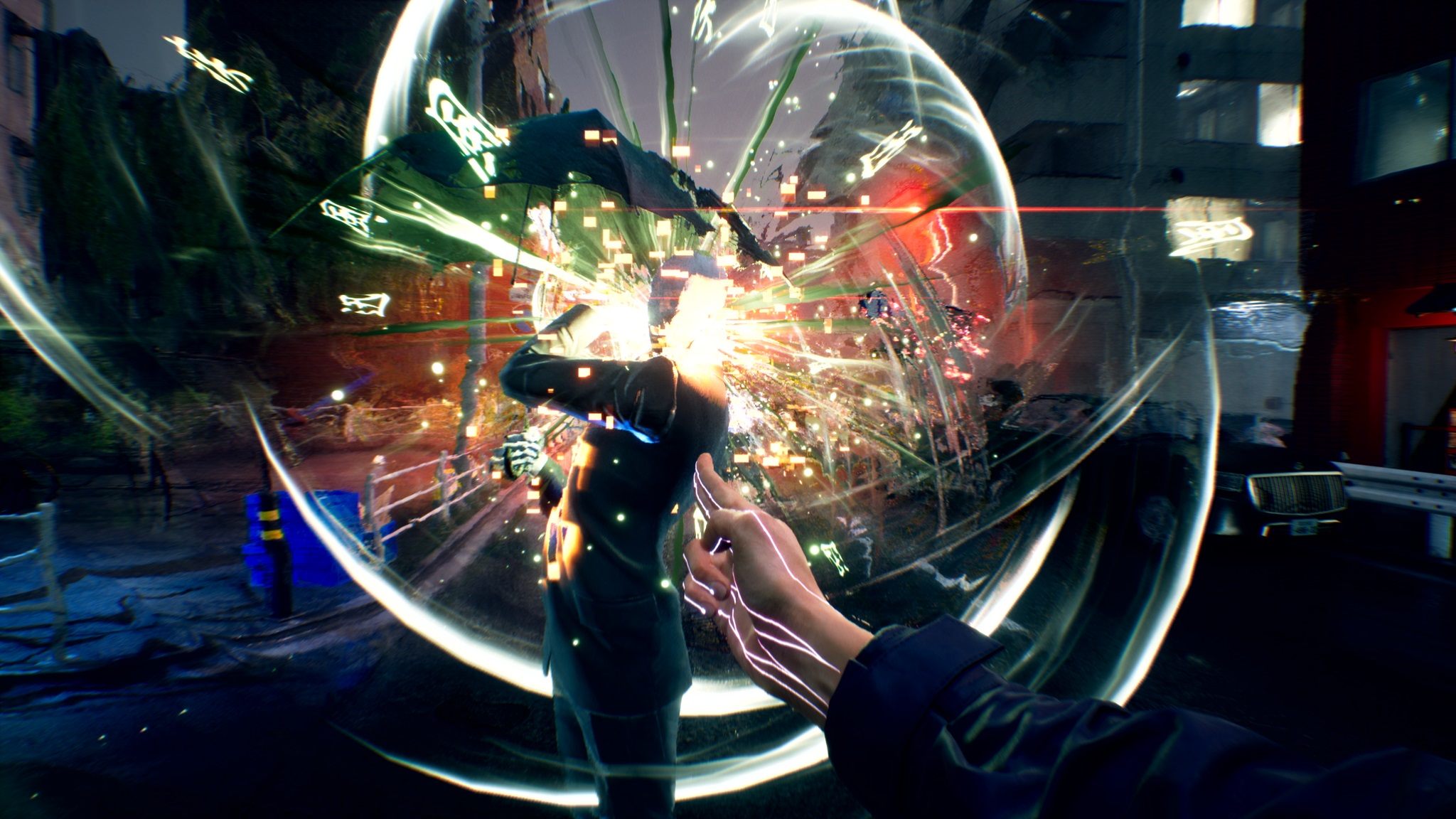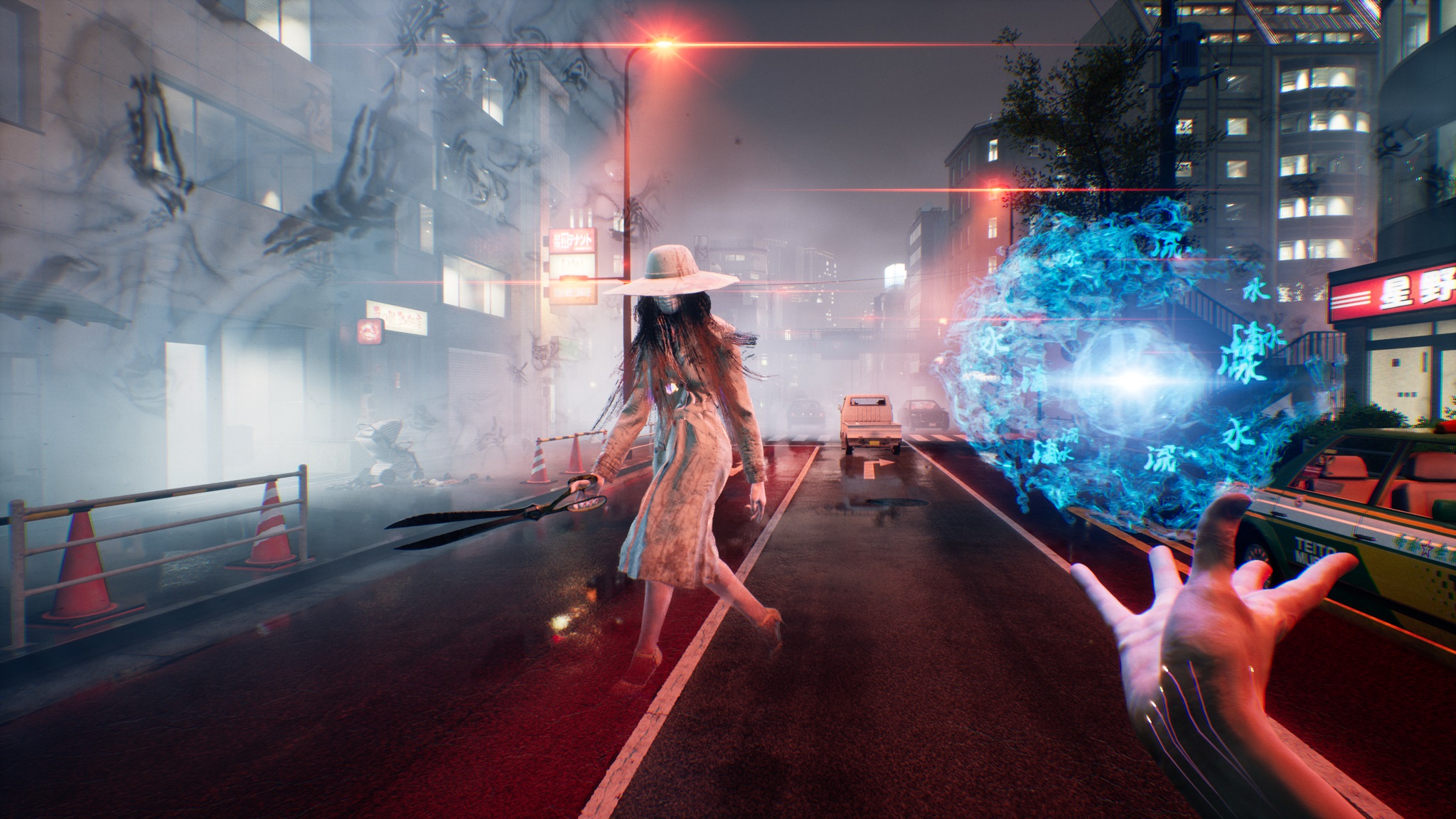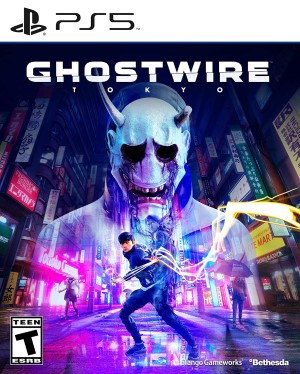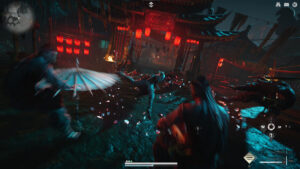
NOTE: You can read original our review of Ghostwire: Tokyo’s 2022 PS5 version through here.
In a year where the developer beshind the survival horror series The Evil Within, Tango Gameworks, shadow-drops the thrilling, light-hearted rhythm-action title Hi-Fi Rush to critical acclaim, it’s a total wonder that Xbox players receive yet another heavy-hitting game from the studio in such a short time-span.
Ghostwire: Tokyo’s foundation may lie in horror themes, but this adventure is most assuredly an action-oriented affair with a grand open-world in the Shibuya district of Tokyo to boot. The crux of the game’s narrative is that Akito, an ordinary citizen, is possessed by a spirit named KK. At the same time that this occurs on the streets of Tokyo, a supernatural fog whips across the population turning everyone into spirits and bringing a torrent of evil paranormal entities at the behest of the villainous figure simply known as a Hannya. These hostiles are creepy in their own right ranging from headless ghost creatures to Slenderman look-alikes and everything in between. Because Akito is somewhat protected from the ordeal thanks to KK, the burden lies on him to get to the heart of the matter.
"Ghostwire: Tokyo’s foundation may lie in horror themes, but this adventure is most assuredly an action-oriented affair with a grand open-world in the Shibuya district of Tokyo to boot."
The game follows a linear story beat with KK and Akito constantly sharing dialogue with one another as they investigate the horrific happenings across Tokyo. Operating in the first-person perspective, Akito is granted supernatural abilities thanks to KK. He can whip up wind, water, and fire projectiles with his hands each with varying degrees of damage toward the hostile spirits. Furthermore, Akito can harness a bow that fires arrows capable of harming the spirits. With these powers, combat can be wildly fast and frenetic as more and more hostiles assault you at once. Furthermore, you have the option of directly melee assaulting enemies and ripping out their cores when stunned to obtain HP and a limited replenishment of ethereal ammo, of sorts, for your three elemental attacks. However, combat never gains a level of significant depth that keeps it from feeling stale after several hours into the adventure. This is partly inherent in the lackluster variation of Akito’s four primary projectile attacks. The problem is only compounded by limited upgrade options that never truly innovate on Akito’s existing abilities.
Players will find that in the midst of combat later in the game, the first-person shooting mechanics of slinging supernatural barbs might begin to feel a tad sluggish as numerous enemies rush Akito. Using quick or charged shots will often need to be interrupted with blocking maneuvers. This change-up doesn’t feel tight, quick, or intuitive. In a fight, players will inevitably take damage in moments that don’t feel entirely fair given the rigid and sometimes slow control scheme that might ultimately force you to flee a dicey situation in order to simply recuperate.
From an exploration perspective, traversal doesn’t just remain at street level as Akito’s newfound abilities enable him to scale buildings using a grappling feature. Verticality, thankfully, isn’t tedious as Akito never takes fall damage even if he plummets from the highest building in the city. There’s also a gliding function KK grants Akito that can be upgraded to increase the ease of getting from A to B. The game only falters in its limited variability as far as landscape is concerned. Shibuya’s urban sprawl is largely the same throughout. Players will inevitably venture out into the far reaches of the city to take on side quests (which there are plenty of) and collect power from Yokai or Oni spirits of Japanese lore that will grant further upgrade options. The same-y feel of the game’s overall aesthetic will eventually become dull for most.
"Shibuya’s urban sprawl is largely the same throughout. Players will inevitably venture out into the far reaches of the city to take on side quests (which there are plenty of) and collect power from Yokai or Oni spirits of Japanese lore that will grant further upgrade options. The same-y feel of the game’s overall aesthetic will eventually become dull for most."
Unlocking more areas of the map requires Akito to seek out shrines to cleanse which enables him to cut through the dangerous supernatural fog that envelops areas of the city. At these shrines, the game does offer players a chance to pay offerings in exchange for locating points of interest where you can upgrade your combat abilities. Perhaps, one of Ghostwire: Tokyo’s most repetitive tasks is requiring players to locate objects or tail spirit projections. Adding the capability of paying offerings to automatically locate these features is a welcome escape from the tedium of playing hide-and-seek in many other facets of Ghostwire: Tokyo.
Strangely, Ghostwire: Tokyo shines brilliantly when it comes to its side quest options. Side quests are plentiful and will automatically be marked on your map as you cleanse shrines and uncover more of the territory. These side quests offer you a chance to learn about the population of Shibuya as you seek to help spirits who have recently perished or have been displaced. Sometimes, the quest involves an urban myth or piece of Japanese lore while other times, you are seeking to right unjust wrongdoings. These bite-sized stories that dot the map in Ghostwire: Tokyo are each unique, sometimes humorous, other times sad, but always engaging. It’s almost like being a part of a fictitious TV series where the main partnership tackles another paranormal occurrence across homes, offices, or remote buildings. While tasks like tracking down innocent spirits to save throughout Shibuya, finding Yokai, or praying at altars underscore some of “grindier” aspects of Ghostwire: Tokyo, the side quests will leave you wanting to jump right into the next one never making these fun individual vignettes feel like a chore.
While the world might consistently feel like the same gloomy and rainy metropolis throughout, it is beautifully realized. The neon glow of Shibuya is ever present from the brilliant advertising, lit buildings, and beaming street lights throughout the city bouncing off puddles of water in a mirrored reflection. There’s ample evidence of the population that vanished in the fog as clothes lay in the streets, food carts are abandoned, and general life seems to be a snapshot in time. The environments are loaded with detail that will often give you pause as you continue on your quest. There’s a remarkable sheen to the visual design of Ghostwire: Tokyo that will leave you enamored in the early hours of the game.
The overall narrative is compelling enough as you uncover more of the sinister plot afoot. However, certain elements of the story feel a tad shallow. Akito is motivated by the search for his sister who is ultimately nabbed by the game’s primary antagonist. Though, with an exception of the game’s ending, we never really learn much about the relationship between these siblings leaving Akito’s plight to find Mari a tad hollow from the perspective of the player. In fact, KK becomes a far more interesting figure as we slowly begin to uncover his past and the allies he associated with in life. KK is the key to everything, and without him, Akito would be another set of scattered clothes on the pavement of Tokyo’s streets. This imbalance dulls the impact of an otherwise heartfelt and original story.
"While the world might consistently feel like the same gloomy and rainy metropolis throughout, it is beautifully realized."
Aside from the main experience, the Xbox launch of Ghostwire: Tokyo coincides with an update across all platforms entitled the Spider’s Thread. While there are many details and quality-of-life fixes in the main storyline from the original release, the biggest addition comes in the form of a roguelite gauntlet. It pits KK and Akito in an alternate dimension where they run a gamut of 30 “floors” or areas where you must complete objectives in order to proceed. There are optional objectives that grant additional rewards. Every so often, you’ll complete a floor and enter the Cat’s Paw where you can purchase supplies from the strange two-tailed cat vendor.
If you die, you are immediately thrust back to the first floor. However, certain progression aspects remain in place namely spirit skills, spirit threads, and shop unlocks. It’s can be a fun addition to the title for those who wish to see more once the main storyline ends, though it doesn’t do anything to truly fix the often sluggish and simplistic combat that is already presented as a problem in the main storyline. And, if the combat is the worst aspect of the game for you, then prepare for round after round of it cram packed into a challenging package.
In conclusion, Ghostwire: Tokyo is a thoughtful and unique experience. However, an unremarkable combat system and the bane of repetition without elevation hold this title back from being something truly great.
This game was reviewed on the Xbox Series X.
Striking visuals; Wonderfully crafted side quests; Remarkable attention to detail; compelling mysteries.
Sluggish and simplistic combat; Limited depth for progression; Repetitive environments; Shallow elements in the overall narrative.



















